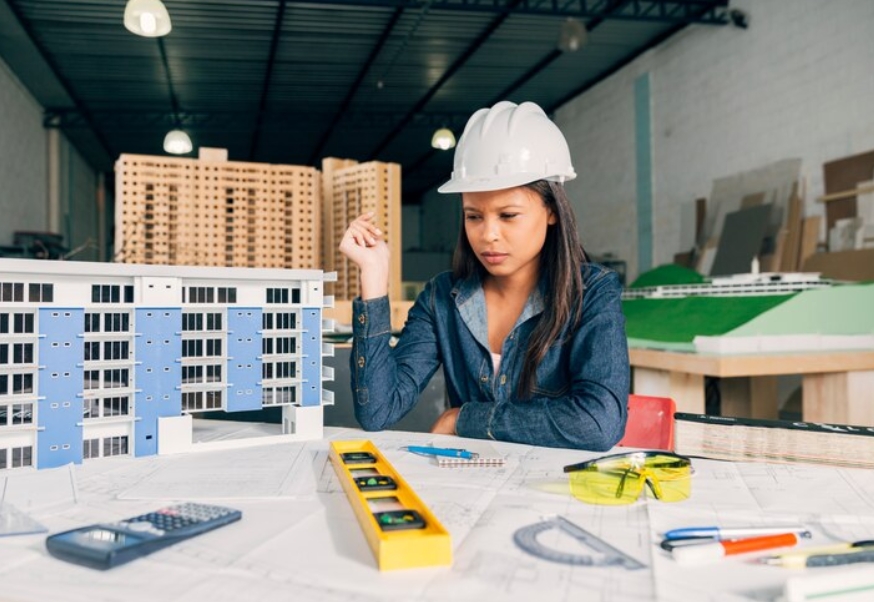Construction to permanent financing is a critical component in the field of real estate development, serving as a bridge from the initial construction phase to the long-term funding necessary for completing and sustaining the project.
This type of financing is particularly advantageous as it combines two loans into one seamless financing plan, reducing the complexity and costs associated with multiple loan applications and closings.
This article delves into the best practices for effectively managing this type of financing, ensuring both the construction phase and the transition to permanent financing are handled efficiently.
Table of Contents
Understanding Construction to Permanent Loans
Construction-to-permanent loans streamline financing from the initial building phase through to a long-term mortgage, simplifying the process for developers. These versatile loans can either consolidate or separate the construction and mortgage phases, offering businesses flexibility in managing costs and terms.
By offering a seamless transition from construction to a permanent mortgage, Capital Max ensures developers have the financial flexibility and support they need at every stage of their project, making the financing process more efficient and tailored to individual project requirements.
Definition and Structure
A construction-to-permanent loan is a type of financing that covers the construction phase of a project and then transitions into a permanent mortgage once the construction is complete.
Initially, the loan provides funds in segments necessary for ongoing construction milestones. Upon completion, the loan converts into a typical mortgage without requiring a second closing process.
Types of Loans
1. Single-Close Loans: These loans require only one set of closing costs and the interest rates can be locked in at the beginning, reducing exposure to interest rate risk.
2. Two-Close Loans: These involve separate loans for the construction phase and the permanent mortgage, offering flexibility to renegotiate terms before transitioning to the permanent phase.
Planning and Preparation
Effective planning and preparation are essential for securing construction to permanent financing. This includes assessing financial health and choosing a knowledgeable lender to ensure project success.
1. Assessing Financial Health
Before embarking on securing financing, developers must evaluate their financial stability and the project’s feasibility. This includes detailed budgeting, analysis of market trends, and realistic project valuation.
2. Choosing the Right Lender
Selecting a lender experienced in construction to permanent financing is vital, as they can offer valuable insights and guidance throughout the process. They should be familiar with local regulations and building codes, which can significantly impact the project.
Effective Management During Construction
During the construction phase, effective management is crucial to prevent budget overruns and ensure financial health.
Key strategies include stringent budget control, having a contingency plan, and ensuring timely fund disbursements.

1. Budget Management
Maintaining strict control over the budget during the construction phase is imperative. Costs can escalate quickly, and without diligent oversight, can lead to significant financial strain.
2. Contingency Plans
Always include a contingency budget to manage unforeseen expenses, typically between 5-10% of the total project cost.
3. Timely Draws and Inspections
Loan disbursements (or draws) are made at various construction milestones. Efficient scheduling of inspections and timely request of draws ensures that the project does not face cash flow issues.
Transitioning to Permanent Financing
As construction nears completion, transitioning to permanent financing becomes a critical phase, requiring meticulous preparation and strategic decisions regarding interest rates.
This stage is crucial for ensuring the project’s financial stability and compliance as it moves into its operational phase.
1. Preparing for Conversion
As construction nears completion, preparing for the transition to permanent financing involves several key steps. This includes final inspections, obtaining certificates of occupancy, and ensuring all contractual obligations are fulfilled.
2. Locking in Interest Rates
If not already locked in, this phase involves securing the interest rate for the mortgage. This can be crucial in maintaining project viability, especially in fluctuating interest rate environments.
Long-term Management and Oversight
After securing permanent financing, diligent long-term management and oversight become crucial, focusing on effective mortgage management and proactive asset maintenance to preserve property value and ensure profitability.
1. Mortgage Management
Once the project transitions to the permanent financing phase, managing the mortgage effectively becomes crucial.
This involves regular payments, managing escrow accounts for taxes and insurance, and potentially refinancing if better terms become available.
2. Asset Management
Effective asset management ensures the property maintains value and generates expected returns.
This includes regular maintenance, upgrades when necessary, and adept management of tenancy issues.
Legal and Regulatory Compliance
Adhering to legal and regulatory compliance is essential in construction and property management, requiring vigilance in staying updated with legal changes and maintaining all necessary permits and approvals to avoid potential setbacks and legal challenges.
1. Staying Informed of Changes
Legal and regulatory landscapes can change, impacting project parameters significantly. Staying informed about these changes can prevent costly legal challenges.
2. Permits and Approvals
Maintain all necessary permits and approvals throughout the construction and operational phases to avoid legal pitfalls and potential project delays.
Conclusion
Managing construction to permanent financing effectively requires thorough planning, a deep understanding of financial and market conditions, and meticulous attention to the project’s ongoing needs.
Best practices include careful lender selection, stringent budget control, preparedness for rate locks, and robust project and asset management post-construction.
By adhering to these guidelines, developers can ensure that their projects proceed smoothly from conception through completion and into successful operation.

